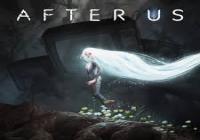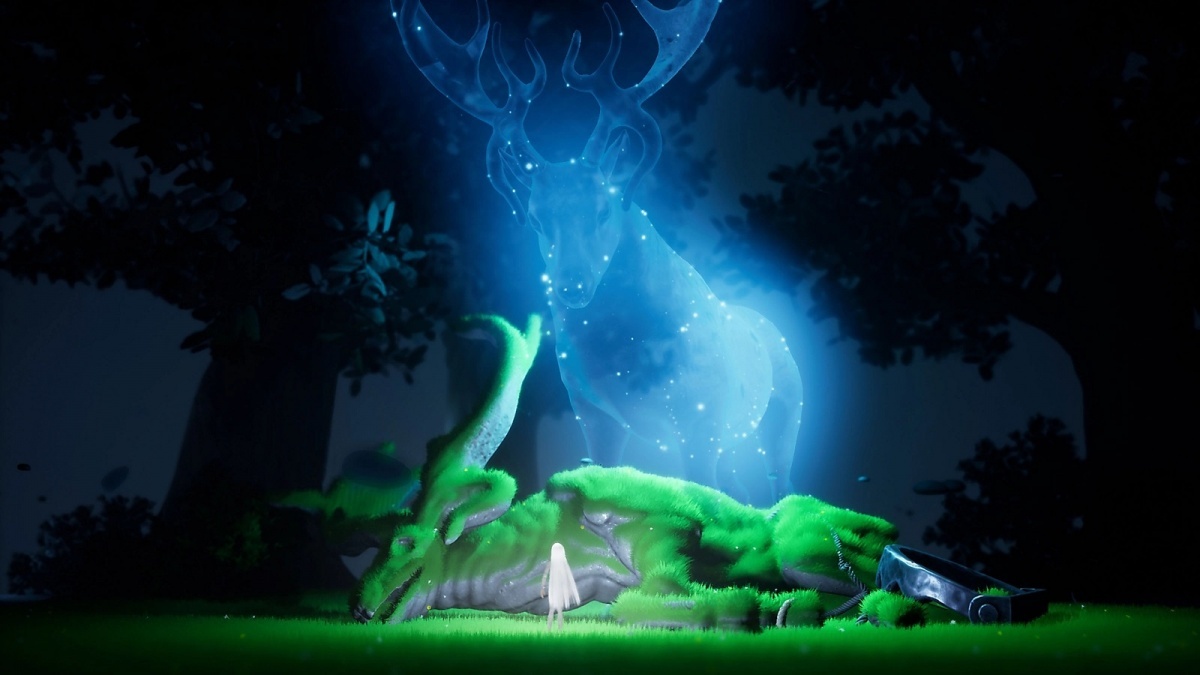After Us (PlayStation 5) Review
By Coller Entragian  27.07.2024
27.07.2024

One of the strengths of the video game medium is how effective it can be at conveying a story with raw visuals. Some of the best examples rely on very little dialogue or have none at all. Journey was a famous instance of a completely wordless quest that focused on telling a story rich with mise en scène storytelling, and it made for an engrossing experience when exploring. There have been many indie game developers throwing their hat into the ring, trying to tell their stories in this abstract style. Can After Us successfully aspire to wow gamers with ninth-gen console technology
After Us emerges as a beacon of unsettling beauty. Its core identity as an exploration 3D platformer is merely the surface of a much deeper, more profound experience. Traversing the post-apocalyptic landscape, players will be immediately struck by the haunting, abstract environments that serve as both a canvas and a mirror. These surreal vistas, a twisted epitaph to mankind's disregard for the environment, drive home the chilling horror of environmental destruction with an uncompromising intensity. After Us's leaves the user in a state of awe and reflection, confronted by the consequences of humanity's actions.
What truly sets After Us apart is its narrative maturity. Amidst the backdrop of desolation, it dares to explore the notion that monstrous ends do not necessarily create monsters. In the midst of the bleak landscapes, it gently whispers that humanity deserves a chance at redemption. It challenges players to confront the darkest aspects of our world, while also offering a glimmer of hope, a possibility for salvation.
As Gaia, gamers will sacrificing themselves to restore Earth's glory and save the spirits of animals. The world is divided up into large biomes that connect to each other and can be played out of order. Each area represents an aspect of Earth's environment and it is vividly realized. The ocean stages depict an abyss of pollution and oil slick and modify the gravity physics to emulate the sensation of being under water. The trash fields are immense and physics are applied to each individual piece of garbage, making wading through the endless heaps feel tangible and believable.

Not all areas are made equal. The skyscraper stage climaxes with a gauntlet of unimaginative platforming challenges that are so basic that the developers couldn't find a way to hide any collectibles. There is also no stand out visuals apart from the feather effects and endless cages that are meant to represent the extinction of birds.
After Us impresses with its production values and art that weaves in and out between lush splendour and decrepit filth. The gameplay keeps things simple so as to not overwhelm the senses. Gaia's moveset makes her mobile and can cover a lot of ground. She is able to wall run on certain surfaces, double-jump, air-dash, glide, and ride on cables. The range of mobility makes it so Gaia can reach almost anywhere. Her controls while air-born do feel floaty, but that comes with the territory when she's roughly the size of a doll. Once acclimated to her controls, it can feel like she can do anything.
Regretfully, After Us felt the need to have combat sequences. The idea is that Gaia fights by using her "heart", which shoots out from her chest and gets whipped back. It is symbolic of her forgiving the humans for ravaging Earth and it's meant to convey that she is redeeming them. The "heart attack", is not an effective or satisfying way to combat the waves of ghoulish nude people, but thankfully, there is little consequences for dying. When Gaia re-spawns, any defeated foe stays gone and she is always a few feet away from the murder scene. She is able to dodge roll, but most battles result in mad dashes where she is throwing her heart frantically and dodging threats from all directions until there are none.

After Us immerses in a distinct and captivating gaming experience. It stands as an open-ended 3D platformer, albeit not in the technical vein of titles like Super Mario Odyssey. Instead, it gravitates towards a weighty and artistic style reminiscent of games such as Little Nightmares or Journey. The levels sprawl expansively, each one a world unto itself. Unlike traditional platformers, collectibles are sparse and hold a different purpose. They serve as enigmatic breadcrumbs scattered throughout the vast landscapes, offering only subtle hints at a deeper, underlying narrative. These objects are like fragments of a lost story, encouraging players to piece together the puzzle themselves.
The true essence of After Us lies in the act of navigating these colossal expanses. It's not merely a physical journey but an emotional and intellectual one as well. The absence of hand-holding and overt objectives allows free exploration, forging individual paths and uncovering the mysteries hidden within the surreal environments.
The weight of solitude and the haunting beauty of the surroundings become companions on this journey. Intuition and self-interpretation must be relied on to progress, much like a wanderer in a surreal dream. Each step is both a challenge and a revelation, as the landscapes traversed speak volumes through their silent grandeur.
After Us unapologetically delivers a heavy-handed and unmistakably direct environmental message, a characteristic that sets it apart from more subtle narratives. Its intent to address humanity's culpability in environmental degradation is indeed commendable, as it tackles a pressing issue that demands attention. However, amidst its fervour to highlight human impact, it inadvertently neglects the profound and awe-inspiring capacity of nature to bring about devastation on its own terms.

The narrative and themes paints a vivid picture of human actions as the primary catalyst for environmental crises, emphasizing human responsibility in causing disasters and extinctions. It holds a mirror to choices and their repercussions, prompting contemplation of the consequences of actions on the planet. This focus on human agency serves as a vital wake-up call, urging reconsideration of humanity's relationship with the environment.
Yet, in its zealous pursuit of this mission, After Us unintentionally obscures the staggering power inherent in natural forces. Nature, with its indomitable might seen in tidal waves and volcanic eruptions, has been the architect of cataclysmic events throughout Earth's history. Storms and earthquakes, manifestations of nature's fury, have the capacity to obliterate habitats, disrupt ecosystems, and drive species to the brink of extinction.
These natural occurrences, sometimes occurring without any human influence, underscore the fragility of life on Earth and the relentless cycles of destruction and rebirth in the natural world. After Us misses an opportunity to weave this aspect of nature's power into its narrative, opting instead for a singular focus on human actions.
A more nuanced approach might have explored the delicate balance between human influence and nature's innate propensity for upheaval. It could have depicted humanity's role in exacerbating natural disasters or, conversely, our efforts to mitigate their impact. Such a narrative might have encouraged players to contemplate the intricate relationship between human activity and the forces of nature, fostering a deeper understanding of the complexity of environmental issues.

Cubed3 Rating
Very Good - Bronze Award

After Us stands as a thought-provoking testament to human responsibility, but it leaves untouched the broader canvas of nature's relentless force. Recognizing both sides of this environmental equation would have offered a more comprehensive perspective on the intricate dance between humanity and the natural world, underscoring the urgent need for responsible stewardship of our planet. The gameplay is serviceable and the game's length won't leave anyone asking for more, but the real showstopper is its gorgeous visuals and ambiance.

![]() 7/10
7/10
![]() 0
(0 Votes)
0
(0 Votes)
 Out now
Out now  Out now
Out now  Out now
Out now  Out now
Out now Comments
Comments are currently disabled

 Sign In
Sign In Game Details
Game Details Subscribe to this topic
Subscribe to this topic Features
Features






 Top
Top

